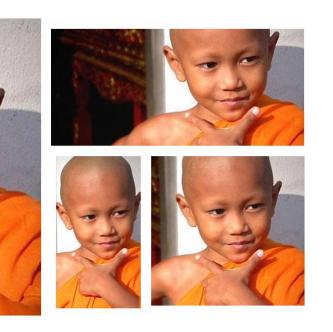Image Generation
1979 papers with code • 85 benchmarks • 67 datasets
Image Generation (synthesis) is the task of generating new images from an existing dataset.
- Unconditional generation refers to generating samples unconditionally from the dataset, i.e. $p(y)$
- Conditional image generation (subtask) refers to generating samples conditionally from the dataset, based on a label, i.e. $p(y|x)$.
In this section, you can find state-of-the-art leaderboards for unconditional generation. For conditional generation, and other types of image generations, refer to the subtasks.
( Image credit: StyleGAN )
Libraries
Use these libraries to find Image Generation models and implementationsDatasets
Subtasks
-
 Image-to-Image Translation
Image-to-Image Translation
-
 Image Inpainting
Image Inpainting
-
 Text-to-Image Generation
Text-to-Image Generation
-
 Conditional Image Generation
Conditional Image Generation
-
 Conditional Image Generation
Conditional Image Generation
-
 Face Generation
Face Generation
-
 3D Generation
3D Generation
-
 Image Harmonization
Image Harmonization
-
 Pose Transfer
Pose Transfer
-
 3D-Aware Image Synthesis
3D-Aware Image Synthesis
-
 Facial Inpainting
Facial Inpainting
-
 Layout-to-Image Generation
Layout-to-Image Generation
-
 ROI-based image generation
ROI-based image generation
-
 Image Generation from Scene Graphs
Image Generation from Scene Graphs
-
 Pose-Guided Image Generation
Pose-Guided Image Generation
-
 User Constrained Thumbnail Generation
User Constrained Thumbnail Generation
-
 Handwritten Word Generation
Handwritten Word Generation
-
 Chinese Landscape Painting Generation
Chinese Landscape Painting Generation
-
 person reposing
person reposing
-
 Infinite Image Generation
Infinite Image Generation
-
 Multi class one-shot image synthesis
Multi class one-shot image synthesis
-
 Single class few-shot image synthesis
Single class few-shot image synthesis
Latest papers with no code
MoA: Mixture-of-Attention for Subject-Context Disentanglement in Personalized Image Generation
MoA is designed to retain the original model's prior by fixing its attention layers in the prior branch, while minimally intervening in the generation process with the personalized branch that learns to embed subjects in the layout and context generated by the prior branch.
Image Generative Semantic Communication with Multi-Modal Similarity Estimation for Resource-Limited Networks
This method transmits only the semantic information of an image, and the receiver reconstructs the image using an image-generation model.
Optical Image-to-Image Translation Using Denoising Diffusion Models: Heterogeneous Change Detection as a Use Case
We introduce an innovative deep learning-based method that uses a denoising diffusion-based model to translate low-resolution images to high-resolution ones from different optical sensors while preserving the contents and avoiding undesired artifacts.
SSDiff: Spatial-spectral Integrated Diffusion Model for Remote Sensing Pansharpening
Pansharpening is a significant image fusion technique that merges the spatial content and spectral characteristics of remote sensing images to generate high-resolution multispectral images.
On the Scalability of GNNs for Molecular Graphs
However, structure-based architectures such as Graph Neural Networks (GNNs) are yet to show the benefits of scale mainly due to the lower efficiency of sparse operations, large data requirements, and lack of clarity about the effectiveness of various architectures.
Generating Counterfactual Trajectories with Latent Diffusion Models for Concept Discovery
In the first step, CDCT uses a Latent Diffusion Model (LDM) to generate a counterfactual trajectory dataset.
OneActor: Consistent Character Generation via Cluster-Conditioned Guidance
Comprehensive experiments show that our method outperforms a variety of baselines with satisfactory character consistency, superior prompt conformity as well as high image quality.
Adversarial Identity Injection for Semantic Face Image Synthesis
Among all the explored techniques, Semantic Image Synthesis (SIS) methods, whose goal is to generate an image conditioned on a semantic segmentation mask, are the most promising, even though preserving the perceived identity of the input subject is not their main concern.
OmniSSR: Zero-shot Omnidirectional Image Super-Resolution using Stable Diffusion Model
Omnidirectional images (ODIs) are commonly used in real-world visual tasks, and high-resolution ODIs help improve the performance of related visual tasks.
Watermark-embedded Adversarial Examples for Copyright Protection against Diffusion Models
Diffusion Models (DMs) have shown remarkable capabilities in various image-generation tasks.





















































































 CIFAR-10
CIFAR-10
 ImageNet
ImageNet
 CIFAR-100
CIFAR-100
 MNIST
MNIST
 Cityscapes
Cityscapes
 CelebA
CelebA
 Fashion-MNIST
Fashion-MNIST
 CUB-200-2011
CUB-200-2011
 FFHQ
FFHQ
 Oxford 102 Flower
Oxford 102 Flower